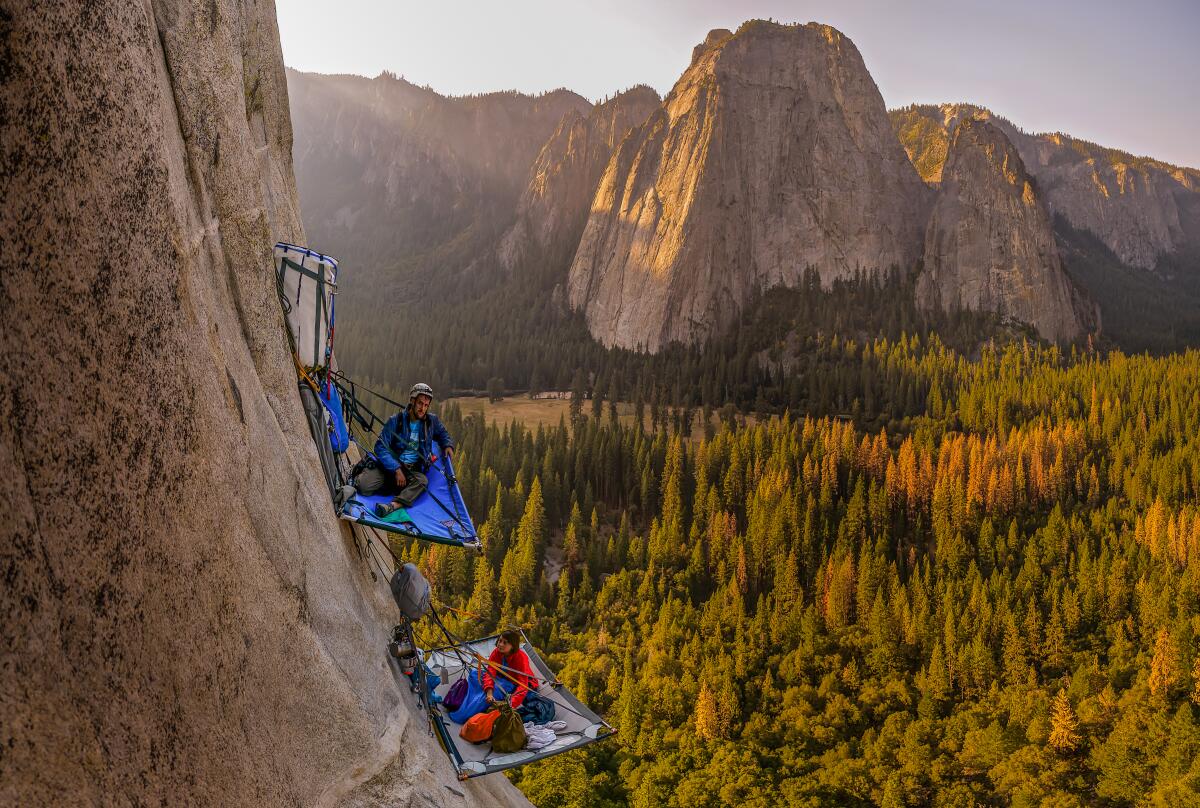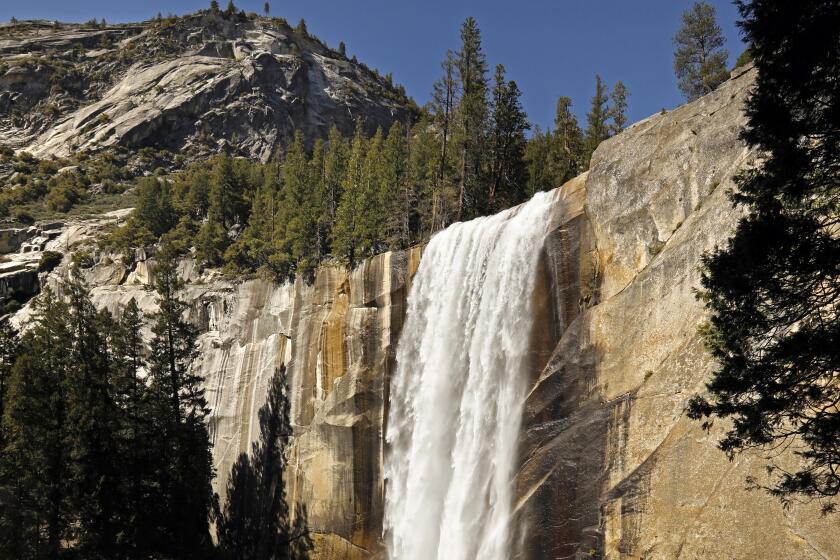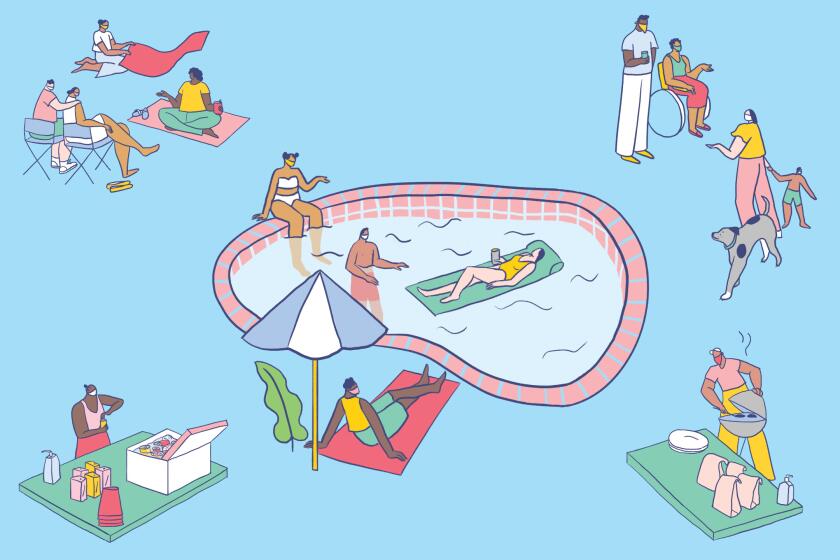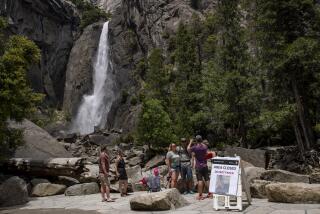Climbing El Capitan? Yosemite’s divisive permits for overnight climbers here to stay

- Share via
Yosemite National Park has made permanent a divisive overnight rock climbing permitting system aimed at protecting wilderness and monitoring visitors as the sport has grown rapidly in popularity.
After a two-year pilot period, the permits are now required for those attempting “big wall” climbs such as El Capitan or Half Dome, which are so difficult they typically take more than one day to complete — meaning climbers must camp along the rock face. Permits are not necessary for single or part-day climbs.
Although the permits are free and unlimited, the process has drawn disdain from some free-spirited adventurers over the last few months.
But the permanent permitting process, which went into effect this month, will allow some more flexibility compared with the pilot, according to Yosemite Climbing Program Ranger Jesse McGahey. He said the process allows climbers to self-register year-round, instead of having to meet with a climbing ranger in person to get a permit.
“This allows climbers to get early starts on the walls and not be confined to office hours to pick up their permit,” McGahey wrote in an email.
The record-setting snowpack over the winter has recharged the waterfalls at Yosemite National Park, which is home to one of the tallest waterfalls in the world.
“The community is split on whether they want to register for permits or not,” said Leslie Chow, a rock climber who also volunteers at the Yosemite Climbing Assn. “Being who our community is, a lot of people don’t like rules and it does have some repercussions — it’s not spontaneous anymore — but welcome to the 21st century.”
He also called it an equity issue, as any other overnight visitor in a designated wilderness area has to get a backcountry permit. But maybe more important, he said, it will help with management of the climbing routes and surrounding regions.
“El Capitan has become so crowded with climbing, we’ve seen as many as eight parties on the nose at one time — they’re stacked up,” Chow said. “It’s also part of data gathering: Are there things we can do to improve the climbing experience?”
The climbing association is working with park officials to offer the permits at its museum and shop in the nearby town of Mariposa, so climbers don’t have to make two stops.
After a dreary Memorial Day weekend, we’ve got summer on our minds — think beaches, rooftop bars and Hollywood Bowl shows.
“The permit system helps climbing rangers better understand use patterns on big walls,” according to the National Park Service. “It will also increase compliance with existing regulations and minimize impacts to wilderness character through improved education.”
Climbers can self-register for the permits, which require them to pack out any solid human waste or trash, prohibit the use of motorized drills, and regulate where fires can be lit and how long ropes can remain on rock surfaces.
“Big wall” climbing developed in Yosemite in the 1950s, according to the park, and has soared in popularity in recent years. It gained even more publicity after the release of the 2018 documentary “Free Solo,” which showcased climber Alex Honnold’s attempt to summit El Capitan’s giant granite face without using ropes.
More to Read
Sign up for Essential California
The most important California stories and recommendations in your inbox every morning.
You may occasionally receive promotional content from the Los Angeles Times.













